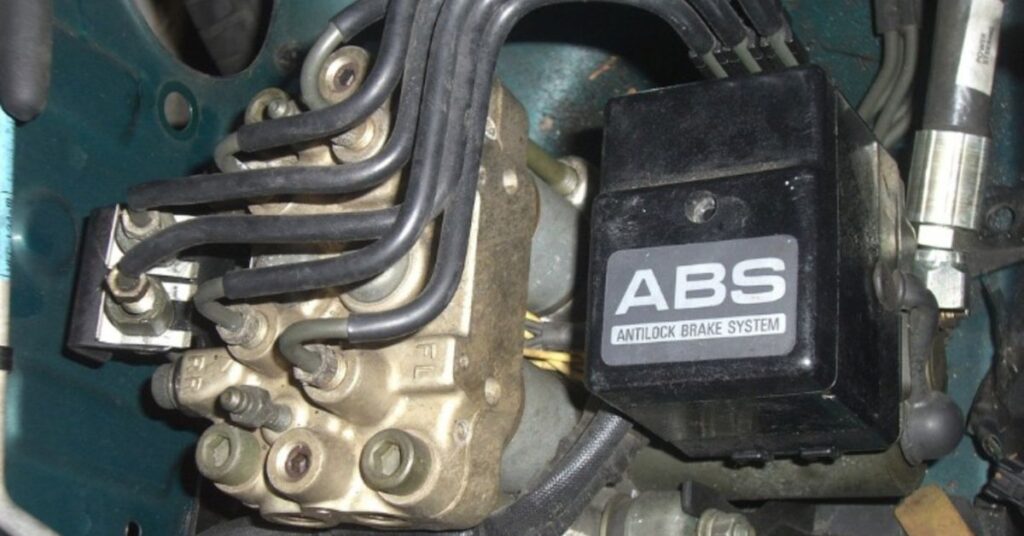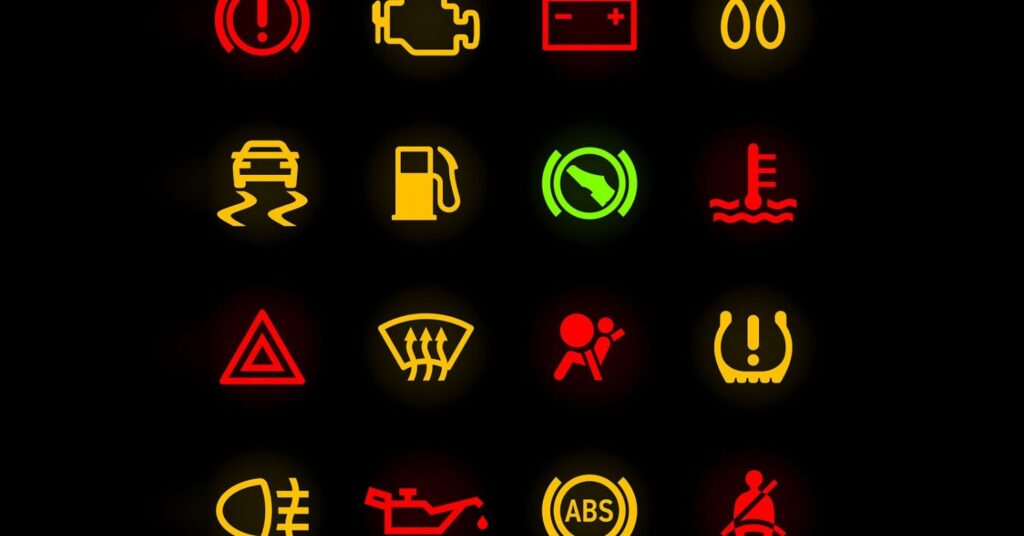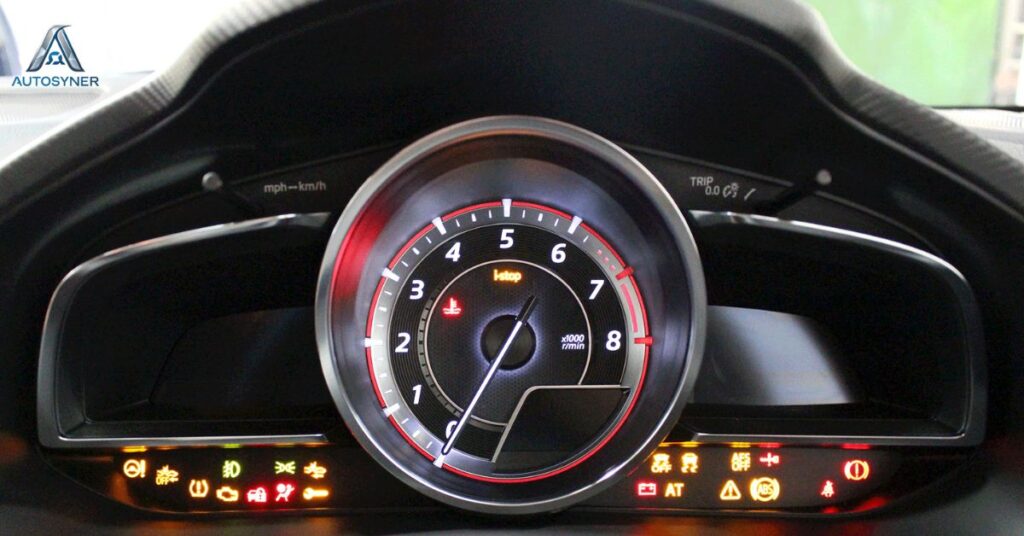The “Service Advance Trace” light warns of issues with a car’s stability control system. Common triggers include sensor malfunctions or wiring problems, which can often be fixed by inspecting and cleaning sensors, checking wiring, or recalibrating sensors.
Have you ever seen the ‘Service Advance Trace’ light pop up on your car’s dashboard? It’s like a mystery signal indicating trouble with your vehicle’s stability control. But fear not! There are simple solutions like cleaning sensors or checking wiring to get you back on the road safely.
What Does Service Advance Trace Mean?
The light indicates a potential issue with your vehicle’s Advance Trace system. Advance Trace is a stability control feature designed to enhance vehicle stability and traction during certain driving conditions.
When the “Service Advance Trace” light comes on, it suggests that there may be a malfunction or problem within the Advance Trace system that needs attention. It’s important to have the vehicle inspected and repaired to ensure continued safe operation.
Triggers of the Service Advance Trace Warning Light
The warning light in a vehicle typically illuminates to indicate a problem with the Advance Trace system. Several factors can trigger this warning light, including.
Read This Blog: WHAT DOES THE CHECK FUEL CAP WARNING LIGHT MEAN?
Sensor Malfunctions: Issues with wheel speed sensors or steering angle sensors can trigger the warning light. These sensors are crucial for the proper functioning of the Advance Trace system.
Electrical Problems: Faulty wiring, connectors, or electrical components associated with the Advance Trace system can cause the warning light to come on.

Control Module Faults: Problems with the Advance Trace control module or its components can lead to the activation of the warning light.
Mechanical Issues: Any mechanical problems affecting the components involved in the Advance Trace system, such as the ABS (anti-lock braking system) or traction control system can trigger the warning light.
Software Glitches: Occasionally, software glitches or programming errors within the vehicle’s onboard computer systems can cause the Service Advance Trace light to illuminate.
It’s essential to address the underlying cause of the warning light promptly to ensure the proper functioning of the vehicle’s stability control system and maintain safety while driving. Consulting a qualified mechanic or dealership for diagnosis and repair is recommended when the Service Advance Trace warning light appears.
Faulty Sensors
One of the common triggers for the warning light is faulty sensors. These sensors, such as wheel speed sensors and steering angle sensors, play a critical role in monitoring the vehicle’s dynamics and aiding the Advance Trace system in maintaining stability and traction.
Also Read This Blog: HOW TO START CAR WITH BAD IGNITION SWITCH?
When these sensors malfunction or fail to provide accurate data, it can lead to the activation of the warning light. Inspecting and, if necessary, replacing the faulty sensors can help resolve this issue and restore the proper functioning of the Advance Trace system.
Damaged ABS Module
Another trigger for the warning light is a damaged ABS (anti-lock braking system) module. The ABS module is integral to the proper operation of the Advance Trace system, as it works in conjunction with other components to enhance vehicle stability and control.

If the ABS module becomes damaged or malfunctions, it can result in erroneous signals being sent to the Advance Trace system, leading to the activation of the warning light. Repairing or replacing the damaged ABS module is necessary to address this issue and ensure the effective functioning of the Advance Trace system.
Wheel Speed Sensor Issues
Wheel speed sensor issues are a frequent cause of the warning light. These sensors monitor the speed of each wheel and provide crucial data to the Advance Trace system to help maintain stability and traction.
If a wheel speed sensor malfunctions or becomes damaged, it can disrupt the system’s ability to accurately assess vehicle dynamics, triggering the warning light. Cleaning or replacing the faulty sensor can often resolve the issue and restore proper function to the system.
Faulty Wiring or Connections
Faulty wiring or connections are another common trigger for the “Service Advance Trace” warning light. The system relies on a network of wiring and connections to transmit data between various components, including sensors and control modules.
If any of these wires become damaged, frayed, or disconnected, it can disrupt the flow of information and cause the warning light to illuminate. Inspecting the wiring harness and connections for any signs of damage or corrosion and repairing or replacing them as needed can often resolve this issue and restore the proper operation of the Trace system.
Limp Mode Activated
When a vehicle enters “limp mode” with the warning light on, it means there’s a serious problem detected. Limp mode is like a safety feature that limits performance to prevent further damage.
It’s activated when the car’s computer senses a critical issue, possibly with the Trace system or related components. This could be due to sensor malfunctions or electrical problems. To fix it, it’s essential to get the vehicle checked by a mechanic. They’ll use special tools to diagnose and repair the issue, ensuring the car runs safely again. Remember, it’s best not to drive far when the car is in limp mode to prevent potential damage.
Wheel Bearing Problems
Wheel bearing problems can trigger the warning light in a vehicle. Wheel bearings are critical components that support the weight of the vehicle and allow the wheels to rotate smoothly.

When a wheel bearing becomes worn or damaged, it can cause vibrations, noise, and instability, which may affect the operation of the Trace system. If the Advance Trace system detects abnormal wheel behavior due to faulty wheel bearings, it may activate the warning light to alert the driver to the issue.
Replacing the worn or damaged wheel bearings is necessary to resolve this problem and restore proper functioning of the system.
Other Malfunctions
Other malfunctions in various vehicle systems can also trigger the “Service Advance Trace” warning light. These malfunctions may include issues with the ABS (anti-lock braking system), traction control system, steering components, or electronic stability control system.
Any malfunction that affects the vehicle’s stability or traction control capabilities can cause the warning light to illuminate. Diagnosing and addressing these malfunctions promptly is essential to ensure safe operation of the vehicle.
Consulting a qualified mechanic or dealership for thorough diagnosis and repair is recommended to resolve these issues effectively.
Traction Control System Issues
Traction control system issues can also trigger the warning light. The traction control system works in conjunction with the Advance Trace system to help maintain traction and stability during acceleration, especially in slippery conditions.
If there are malfunctions or faults within the traction control system, such as faulty sensors or damaged components, it can lead to the activation of the warning light. Resolving traction control system issues may involve diagnosing and repairing or replacing faulty components to ensure optimal performance and safety of the vehicle’s traction control system.
Faulty Steering Angle Sensor
A faulty steering angle sensor can be a culprit behind the activation of the warning light. The steering angle sensor is a critical component of the vehicle’s stability control system, as it measures the angle of the steering wheel and helps determine the vehicle’s direction and stability.

If the steering angle sensor malfunctions or loses calibration, it can disrupt the operation of the Advance Trace system, leading to the warning light being illuminated. Repairing or recalibrating the faulty steering angle sensor is essential to restore proper functionality to the Advance Trace system and ensure safe driving conditions.
Is It Safe to Drive with the Service Advance Trace Light On?
Driving with the Service light on can be risky, especially if the issue is related to the stability control system.
The Advance trace system plays a crucial role in helping to maintain control of the vehicle during various driving conditions, such as slippery roads or sudden maneuvers. When the system is compromised, it may not function properly, potentially increasing the risk of loss of control and accidents.
Here are a few reasons why it may not be safe to drive with the Service light on.
Reduced Stability: The Advance trace system helps stabilize the vehicle by applying individual brakes and adjusting engine power as needed. If the system is not functioning correctly, your vehicle’s stability may be compromised, especially in emergency situations or adverse driving conditions.
Decreased Traction Control: Advance trace includes traction control, which helps prevent wheel spin during acceleration on slippery surfaces. A malfunctioning system may not effectively control wheel spin, increasing the risk of skidding or loss of traction.
Potential for Further Damage: Ignoring the Service light could lead to further damage to related components. For example, if the issue is caused by a faulty wheel speed sensor, continuing to drive without addressing the problem may result in additional damage to the ABS system or other parts.
Impact on Other Systems: In some vehicles, the Advance trace system is integrated with other safety systems such as the ABS (Anti-lock Braking System) and stability control. A malfunction in one system could potentially affect the performance of others, further compromising vehicle safety.
For these reasons, it’s generally recommended to address the issue promptly and avoid driving the vehicle until the problem is resolved. Continuing to drive with the Service red light on could pose a safety risk to you, your passengers, and others on the road.
If you encounter the Service light while driving, it’s advisable to pull over safely, turn off the engine, and assess the situation. Depending on the severity of the issue and your proximity to assistance; you may choose to have the vehicle towed to a qualified mechanic or dealership for inspection and repair.
Why Does the “Service Advance Trace” Warning Light Come On?
The warning light illuminates when there’s a problem with the vehicle’s stability control system. Common reasons include faulty wheel speed sensors, steering angle sensor issues, problems with the ABS module, malfunctioning yaw rate sensors, electrical issues, or software errors.

When this light appears, it’s crucial to have the vehicle checked by a qualified mechanic to diagnose and fix the problem promptly. Ignoring the warning light can compromise vehicle safety and lead to further damage.
Can You Continue Driving With the Service Advance Trace Light On?
Driving with the Service Advance trace light on is not recommended. This warning light indicates a malfunction or issue with the vehicle’s stability control system, which can compromise safety.
Continuing to drive with this light on may lead to reduced stability, traction control issues, and potential damage to other vehicle systems. It’s advisable to have the vehicle inspected by a qualified mechanic as soon as possible and refrain from driving until the issue is resolved to ensure the safety of yourself and others on the road.
How to Reset the Service Advance Trace Light
Resetting the Service Advance trace light typically involves addressing the underlying issue that triggered the warning in the first place. Here’s a general procedure to reset the warning light.
Address the Underlying Issue: Before attempting to reset the warning light, diagnose and fix the problem that triggered it. This may involve inspecting components such as wheel speed sensors, steering angle sensor, ABS module, and related wiring for faults or malfunctions. Once the issue is resolved, the warning light may reset automatically.
Disconnect the Battery: If the issue has been addressed and the warning light persists, you can try resetting it by disconnecting the vehicle’s battery. To do this, locate the vehicle’s battery (usually under the hood) and use a wrench or socket to loosen the nut on the negative (-) terminal.

Disconnect the negative terminal first, followed by the positive (+) terminal. Leave the battery disconnected for about 15-30 minutes to allow the vehicle’s systems to reset.
Reconnect the Battery: After the waiting period, reconnect the battery terminals in the reverse order: positive terminal first, followed by the negative terminal. Ensure the terminals are securely tightened.
Start the Vehicle: Start the vehicle and check if the Service red light has been reset. If the underlying issue has been successfully addressed, and there are no other faults detected, the warning light should turn off.
Use a Diagnostic Tool: If the warning light persists after resetting the battery, or if you’re unsure about the underlying issue, it’s advisable to use a professional diagnostic tool to clear the fault codes associated with the Advance trace system.
A mechanic or dealership will have access to such tools and can perform this procedure accurately.
It’s essential to note that while disconnecting the battery may reset the warning light, it will also reset other settings and systems in the vehicle, such as radio presets and engine idle settings.
If the warning light continues to illuminate after attempting these steps, or if you’re uncertain about performing the reset yourself, it’s best to seek assistance from a qualified mechanic or dealership.
They can diagnose the issue accurately and perform any necessary repairs to ensure the proper functioning of the system.
Frequently Asked Questions
What does the Service Advance trace light indicate?
It indicates a malfunction or issue with the vehicle’s stability control system.
Is it safe to drive with the Service Advance trace light on?
No, driving with the light on is not recommended as it may compromise vehicle stability and safety.
Why does the Service Advance trace light come on?
It may come on due to various issues such as faulty sensors, ABS module problems, or electrical issues.
How can I reset the Service Advance trace light?
You can try resetting it by addressing the underlying issue and disconnecting the vehicle’s battery for a few minutes.
What should I do if the Service Advance traces light remains on after resetting?
Seek assistance from a qualified mechanic to diagnose and fix the underlying issue.
Can I continue driving with the Service Advance trace light on?
It’s not recommended as it may pose safety risks and could lead to further damage to the vehicle.
Conclusion
The Service Advance trace light is a critical indicator of potential issues with the vehicle’s stability control system. Ignoring this warning or driving with the light on can compromise safety and lead to further damage.
It’s essential to address the underlying problem promptly, either by diagnosing and fixing it yourself or seeking assistance from a qualified mechanic. By prioritizing safety and taking proactive steps to resolve the issue, you can ensure the proper functioning of your vehicle’s system and maintain safe driving conditions for yourself and others on the road.







